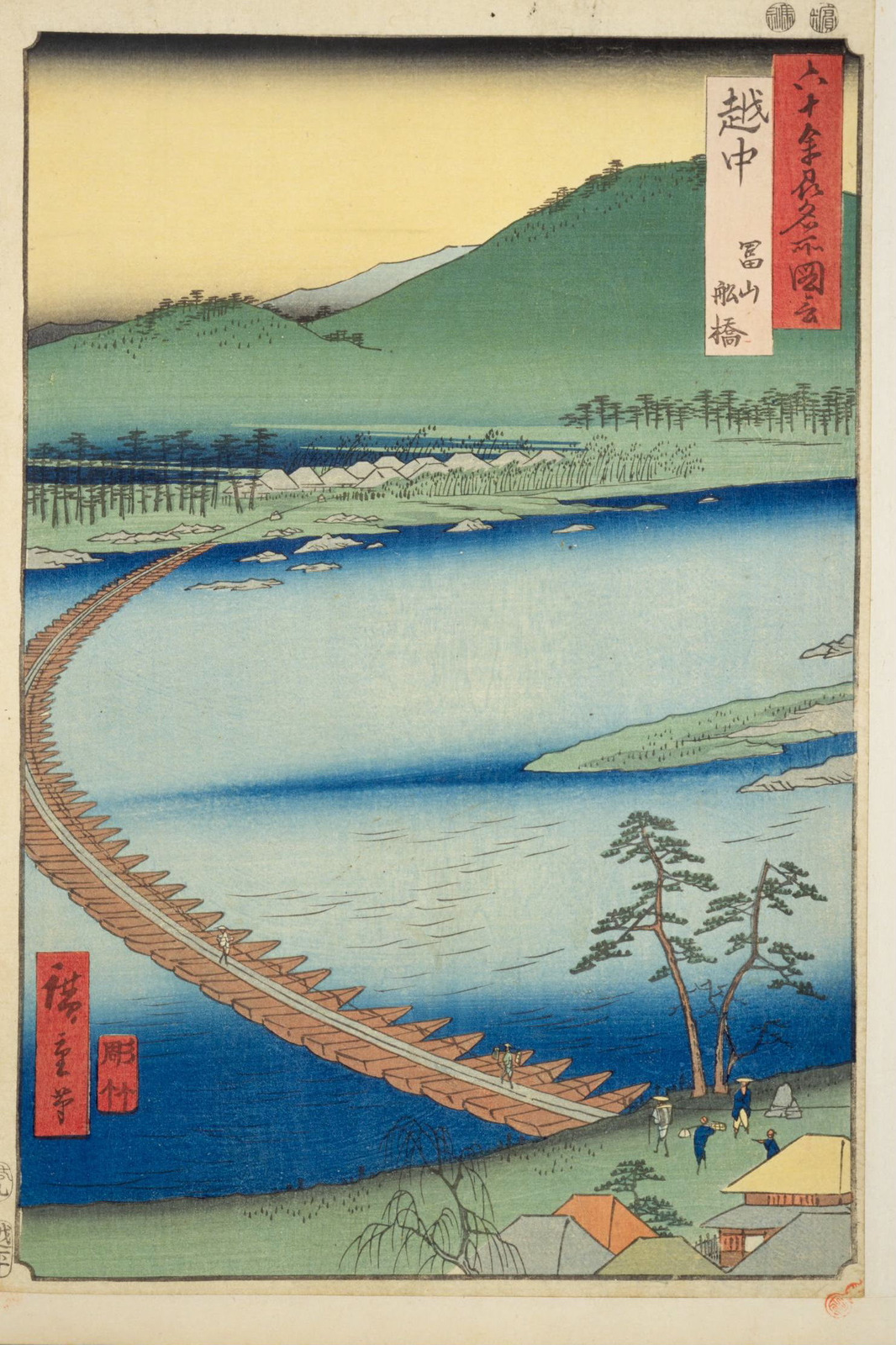|
Kojima Toyoharu
was a samurai of Etchū who served the Jinbo family and may have been a cousin or nephew of Jinbo Yoshimune. Despite this, he attempted on at least one occasion to assert his independence but was convinced to submit to the Jinbo. He was killed in 1520 in battle against Nagao Tamekage was a retainer of Japanese feudal lord Uesugi Fusayoshi, and a ''daimyō'' in his own right, during Japan's Sengoku period. He is perhaps best known as the biological father of Nagao Kagetora, who would be adopted into the Uesugi clan as Ue .... His relation (if any) to the later Kojima Motoshige, a somewhat better-known Jinbo vassal, is unknown. References * Abe, Yoshichiro "Sengoku no Kassen Zenroku" (戦国の合戦全録)Japan, 1973 1520 deaths Samurai Year of birth unknown {{Samurai-stub ... [...More Info...] [...Related Items...] OR: [Wikipedia] [Google] [Baidu] |
Etchū Province
was a province of Japan in the area that is today Toyama Prefecture in the Hokuriku region of Japan. Etchū bordered on Noto and Kaga Provinces to the west, Shinano and Hida Provinces to the south, Echigo Province to the east and the Sea of Japan to the north. Its abbreviated form name was . History was an ancient province of Japan and is listed as one of the original provinces in the '' Nihon Shoki''. The region as a whole was sometimes referred to as . In 701 AD, per the reforms of the Taihō Code, Koshi was divided into three separate provinces: Echizen, Etchū, and Echigo. However, in 702 AD, the four western districts of Etchū Province (Kubiki, Kosi, Uonuma and Kambara) were transferred to Echigo Province. Etchū annexed Noto Province in 741 AD, but Noto was separated out again in 757 AD. In 746 AD, the noted poet Ōtomo no Yakamochi became ''Kokushi'', and left many references to the region in the poetic anthology ''Man'yōshū''. The Nara period provincial ... [...More Info...] [...Related Items...] OR: [Wikipedia] [Google] [Baidu] |
Nagao Tamekage
was a retainer of Japanese feudal lord Uesugi Fusayoshi, and a ''daimyō'' in his own right, during Japan's Sengoku period. He is perhaps best known as the biological father of Nagao Kagetora, who would be adopted into the Uesugi clan as Uesugi Kenshin, and has become one of the most famous Sengoku-period ''daimyōs''. Biography Tamekage was born as the son of Nagao Yoshikage, the deputy military governor of Echigo. His mother came from the Takanashi clan of Shinano. According to George Bailey Sansom, Nagao Tamekage's career makes him representative of the emergence of the ''daimyōs'', and the shift of regional power from the shugo (''constables ''), governors, and other government officials to independent lords. Serving as Deputy (''shugo-dai'') to Fusayoshi, shugo of Echigo Province, Tamekage led his lord's Yamanouchi Uesugi forces to victory against the Ōgigayatsu Uesugi in a series of conflicts from 1500–1505. However, one of a number of ''nari-agari mono'' (� ... [...More Info...] [...Related Items...] OR: [Wikipedia] [Google] [Baidu] |
Kojima Motoshige
was a Japanese samurai of the Sengoku period who served the Uesugi clan. Prior to joining the Uesugi, Kojima had been a senior vassal of Jinbō Nagamoto. In 1582, he provoke a Ikkō-ikki and took Toyama Castle Toyama Castle moat is a flatland-style Japanese castle located in the city of Toyama, Toyama Prefecture, in the Hokuriku region of Japan. It is also called Azumi Castle (安住城 ''Azumi-jō''). Built in 1543, the castle and its surroundi .... Notes References * Abe, Yoshichiro ''Sengoku no Kassen Zenroku'' (戦国の合戦全録) Japan, 1973 {{DEFAULTSORT:Kojima, Motoshige Uesugi retainers Samurai ... [...More Info...] [...Related Items...] OR: [Wikipedia] [Google] [Baidu] |
1520 Deaths
Fifteen or 15 may refer to: *15 (number), the natural number following 14 and preceding 16 *one of the years 15 BC, AD 15, 1915, 2015 Music *Fifteen (band), a punk rock band Albums * ''15'' (Buckcherry album), 2005 * ''15'' (Ani Lorak album), 2007 * ''15'' (Phatfish album), 2008 * ''15'' (mixtape), a 2018 mixtape by Bhad Bhabie * ''Fifteen'' (Green River Ordinance album), 2016 * ''Fifteen'' (The Wailin' Jennys album), 2017 * ''Fifteen'', a 2012 album by Colin James Songs * "Fifteen" (song), a 2008 song by Taylor Swift *"Fifteen", a song by Harry Belafonte from the album '' Love Is a Gentle Thing'' *"15", a song by Rilo Kiley from the album ''Under the Blacklight'' *"15", a song by Marilyn Manson from the album ''The High End of Low'' *"The 15th", a 1979 song by Wire Other uses *Fifteen, Ohio, a community in the United States * ''15'' (film), a 2003 Singaporean film * ''Fifteen'' (TV series), international release name of ''Hillside'', a Canadian-American teen drama *Fi ... [...More Info...] [...Related Items...] OR: [Wikipedia] [Google] [Baidu] |
Samurai
were the hereditary military nobility and officer caste of medieval and early-modern Japan from the late 12th century until their abolition in 1876. They were the well-paid retainers of the '' daimyo'' (the great feudal landholders). They had high prestige and special privileges such as wearing two swords and ''Kiri-sute gomen'' (right to kill anyone of a lower class in certain situations). They cultivated the '' bushido'' codes of martial virtues, indifference to pain, and unflinching loyalty, engaging in many local battles. Though they had predecessors in earlier military and administrative officers, the samurai truly emerged during the Kamakura shogunate, ruling from 1185 to 1333. They became the ruling political class, with significant power but also significant responsibility. During the 13th century, the samurai proved themselves as adept warriors against the invading Mongols. During the peaceful Edo period (1603 to 1868), they became the stewards and chamberlains of ... [...More Info...] [...Related Items...] OR: [Wikipedia] [Google] [Baidu] |

